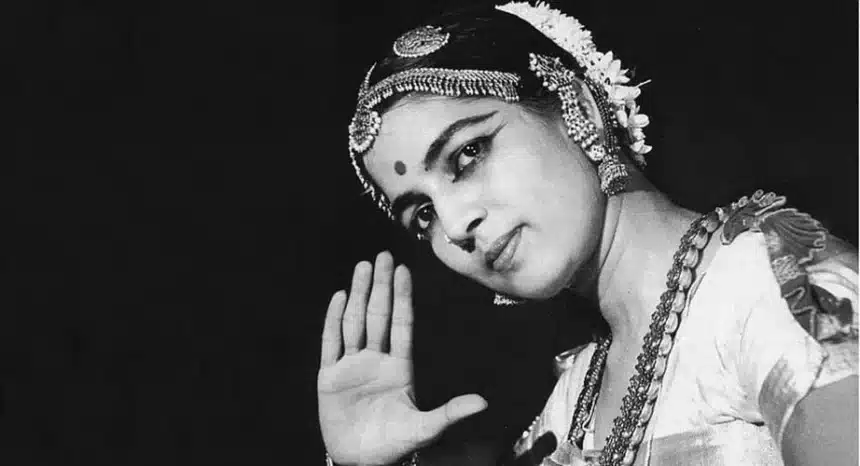Rukmini Devi Arundale (29 February 1904 – 24 February 1986) was an Indian classical dancer, and theosophist. Known for reviving the Bharat Natyam dance form and founding the Kalakshetra Foundation in Madras.
In Indian history, she was the first woman nominated to be a member of the Rajya Sabha.
Early Life
Rukmini Devi Arundale was born on 29 February 1904, in Madras, India. Her mother Seshammal was an avid musician while her father Neelakanta Sastri was an engineer. As a child, Rukmini was exposed to theosophy because her father was deeply involved with theosophical society. Her involvement in society also exposed her to various ideas about culture, music, dance, and theatre.
As a young woman, she was influenced by her father, as well as by Annie Besant, and George Arundale, British educator, and theosophist. In 1920, she got married with George Arundale. She traveled all over the world after her marriage and met inspiring people like Maria Montessori and James Cousins.
Career
In 1923, she was appointed as the president of the All-India Federation of Young Theosophists and became the President of the World Federation of Young Theosophists in 1925.
In 1928, she met Russian ballerina Anna Pavlova in Bombay while she was there for a performance. Later, they traveled on the same ship to Australia. Pavlova suggested Rukmini look into Indian dance forms and in response, she started studying Bharata Natyam and promoting it.
At first, she started learning dance from ‘Mylapore Gowri Amma’, and then from ‘Pandanallur Meenakshi Sundaram Pillai’. When she started learning dance, she was almost 30.
In 1935, at the Diamond Jubilee Convention of the Theosophical Society, where she gave her first public performance. After a year, she founded Kalakshetra, an academy of dance and music near Chennai, with her husband. Bharatnatyam’s original name was Sadhir, and it was considered vulgar. She helped modernize the dance form, give it a fresh name, and popularize it all over the world as a respectable art form.
With renowned dancers, classical musicians, and theorists, she also developed dance-dramas based on Indian epics and mythology, like ‘Sita Swayamvaram’, ‘Sri Rama Vanagamanam’, ‘Paduka Pattabhishekam’, and ‘Sabari Moksham’.
She was an animal rights activist who loved animals. Besides being in several humanitarian groups, she was also a member of the Rajya Sabha. In 1962, under her leadership, the Animal Welfare Board of India was established.
From 1955 to 1986, she was vice president of the International Vegetarian Union.
Awards
In 1956, she received the Padma Bhushan, India’s third highest civilian award.
In 1967, she won The Sangeet Natak Akademi Award, by the Sangeet Natak Akademi, India’s National Academy of Music, Dance & Drama.
In 1968, she received the ‘Prani Mitra’ award, for her work as an animal rights activist.
Death
She died on 24 February 1986, in Chennai, Tamil Nadu, India.
Read More; Madhubala, an Indian actress

